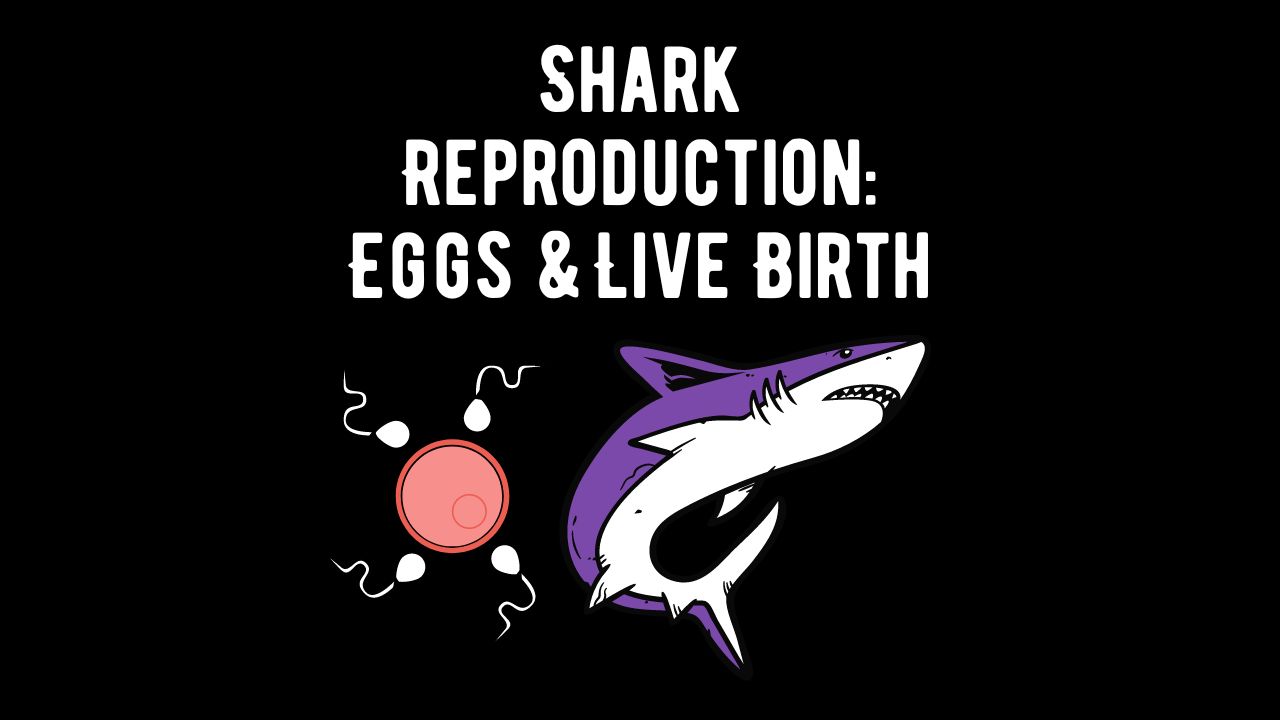
Do Sharks Lay Eggs or give birth to babies? Sharks, with their formidable presence in the world’s oceans, exhibit a fascinating array of reproductive strategies. Of the over 500 known species of sharks inhabiting waters worldwide, a significant portion engages in live birth, while the rest opt for an oviparous approach, laying eggs.
Sharks, often regarded as majestic and fearsome creatures of the deep, have intrigued scientists and marine enthusiasts for centuries. One aspect of their biology that captivates the imagination is their reproductive process. Unlike mammals and some other fish species, sharks exhibit a diverse range of reproductive strategies, with some species laying eggs and others giving birth to live young. In this article, we will explore the fascinating world of shark reproduction, shedding light on the differences between oviparous and viviparous species.
1. Oviparous Sharks:
Egg-Laying Process:
Oviparous sharks, also known as egg-laying sharks, follow a distinctive reproductive process. Female oviparous sharks produce eggs, which are encased in protective cases commonly referred to as “mermaid’s purses” due to their distinctive shape. These egg cases serve as a shield against predators and other potential threats, providing a secure environment for the developing embryo.
Egg Development:
Once the eggs are laid, they are anchored to the ocean floor or other surfaces by tendrils present on the egg case. The development of the embryo within the egg takes place outside the mother’s body. This external gestation period varies among species, ranging from several weeks to months, depending on factors such as water temperature and environmental conditions.
Hatching and Juvenile Stage:
Upon completion of the gestation period, the juvenile shark hatches from the egg case. At this point, the shark is fully formed and equipped to navigate the open ocean. The young shark embarks on its journey into the vast aquatic world, facing various challenges from the moment of hatching.
2. Viviparous Sharks:
Live Birth Process:
Viviparous sharks, in contrast to their oviparous counterparts, give birth to live young. This reproductive strategy involves internal fertilization and embryonic development within the mother’s body. Female viviparous sharks have specialized reproductive organs called uteruses, where the embryos develop.
Embryonic Nourishment:
During the gestation period, the developing embryos receive nourishment directly from the mother through a structure known as the placenta. This adaptation allows viviparous sharks to provide a more stable and protected environment for their offspring compared to oviparous species. The duration of gestation varies among viviparous sharks, with some species carrying their young for several months to over a year.
Maternal Care:
Viviparous sharks often exhibit a form of maternal care. Some species, such as the great white shark, are known to give birth to a small number of relatively large offspring, indicating a substantial investment in each individual. This maternal care enhances the chances of survival for the newborn sharks in the perilous early stages of life.
Examples of Oviparous and Viviparous Sharks:
- Oviparous Sharks:a. Horn Shark (Heterodontus francisci)b. Port Jackson Shark (Heterodontus portusjacksoni)
c. Swellshark (Cephaloscyllium ventriosum)
- Viviparous Sharks:a. Great White Shark (Carcharodon carcharias)b. Hammerhead Shark (Sphyrnidae family)
c. Bull Shark (Carcharhinus leucas)
Evolutionary Perspectives:
- Adaptations for Survival:The choice between oviparity and viviparity in sharks reflects evolutionary adaptations that enhance the chances of survival in different environments. Oviparity may be favored in species inhabiting areas with fewer predators, while viviparity provides an advantage in environments where the offspring face numerous threats from the moment of birth.
- Environmental Influences:Environmental factors, such as temperature and food availability, play a crucial role in shaping the reproductive strategies of sharks. Oviparous species often lay their eggs in relatively stable environments, while viviparous sharks may choose environments where temperature regulation and protection from predators are critical for the survival of their offspring.
Conservation Implications:
- Vulnerability of Eggs:Oviparous sharks face challenges related to the vulnerability of their eggs. Human activities, such as coastal development and pollution, can adversely affect the survival of shark eggs, highlighting the importance of conservation efforts to protect critical breeding habitats.
- Threats to Viviparous Sharks:Viviparous sharks, with their fewer but more developed offspring, are susceptible to overfishing and habitat degradation. Conservation initiatives must take into account the reproductive biology of viviparous species to ensure the long-term survival of these apex predators.
Future Research and Conservation:
- Technological Advances:Advances in technology, such as genetic studies and tracking devices, contribute to a deeper understanding of shark reproduction. These tools enable researchers to monitor the movements and behaviors of sharks, shedding light on critical aspects of their reproductive biology.
- Integrated Conservation Strategies:Conservation efforts should consider the unique reproductive strategies of different shark species. Implementing measures to protect breeding habitats, enforcing sustainable fishing practices, and raising awareness about the importance of sharks in maintaining marine ecosystems are crucial steps toward ensuring the survival of these ancient creatures.
Conclusion:
The world of shark reproduction is a complex and diverse tapestry woven by millions of years of evolution. Oviparous and viviparous sharks have developed distinct strategies to ensure the survival of their species in the vast and often harsh oceanic environments. As we continue to explore and learn more about these fascinating creatures, it becomes increasingly apparent that the conservation of sharks is not only essential for their survival but also for the health and balance of marine ecosystems worldwide.






